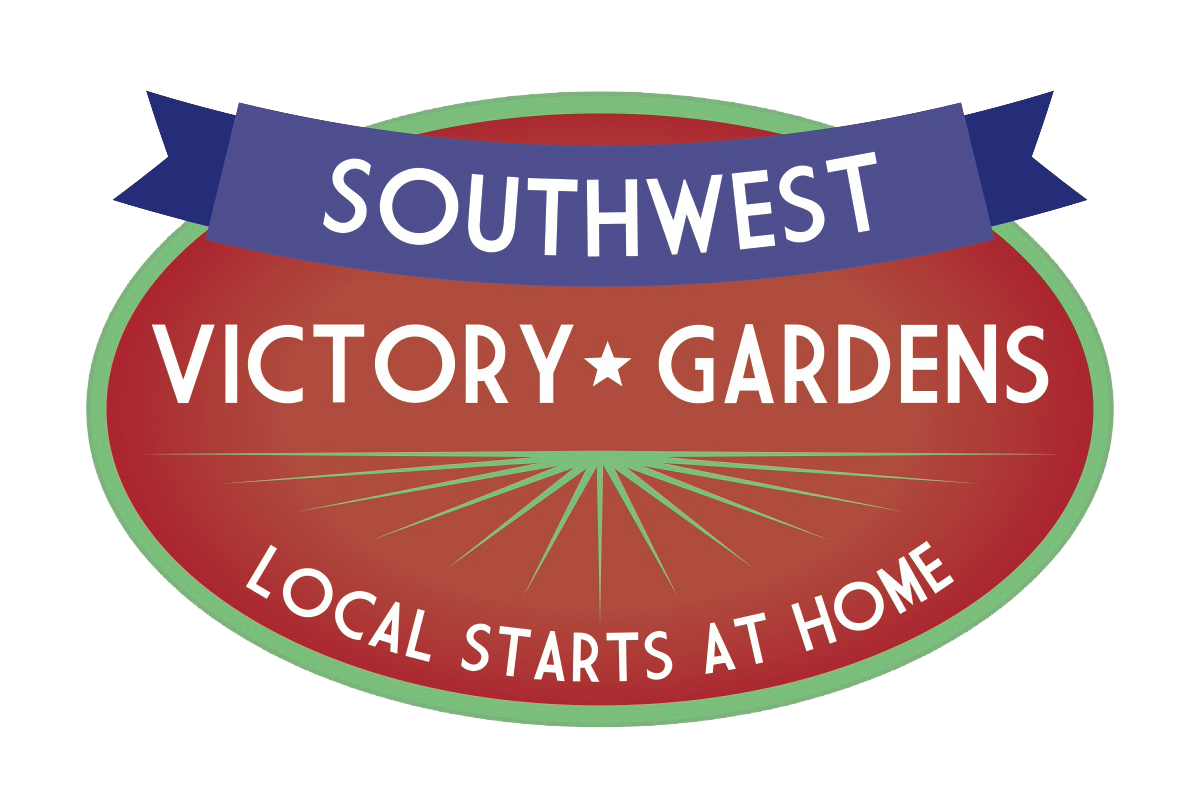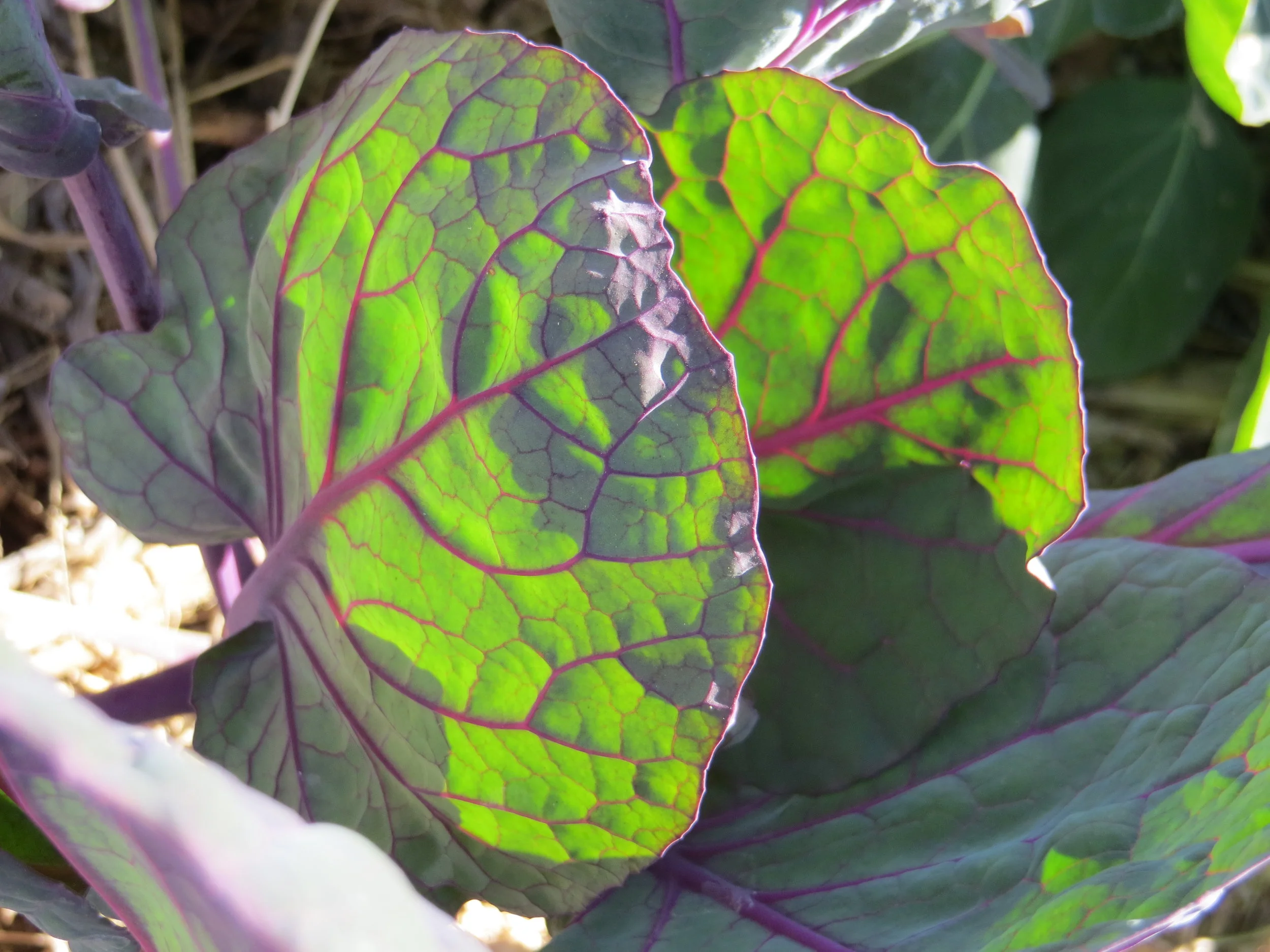There are many great reasons to start a vegetable garden. Gardening is a rewarding hobby that exercises the mind, body, and the soul. Home grown produce is cheaper and tastier than produce you’ll find at the grocery store and the farmers’ markets. The greatest benefit of all, however, may be the fact the foods we grow at home are far more nutrient rich than those available in the supermarket.
Ruby Red Swiss Chard is an excellent source of vitamin C and is a beautiful addition to your garden.
photo: Brandon Merchant
Over the last century farmers, universities, and agribusinesses have made great strides in advancing the food crops we eat. Farmers today, using synthetic chemical fertilizers and genetically modified seeds, are able to grow higher yields than at any other time in history. While yields of crops continue to grow and food becomes cheaper, the nutritional content of the foods available to us has been steadily declining. The food we eat today is far less nutritious than the food we ate only 30 years ago.
Nutrient depletion from the soil caused by decades of industrialized agriculture is the main culprit responsible for the decline of nutrients. Plant breeders have also been slowly breeding the nutrients out of our foods in exchange for more desirable traits such as size, sugar content, or the ability to withstand shipping. With each successive growing season more nutrients are depleted from the soil. This means that crops planted tomorrow will have fewer nutrients than those planted today.
Well intending plant scientists and farmers are not completely to blame. When our hunter gatherer ancestors began to farm, they chose to farm and breed the foods they found to be the tastiest. By doing this they were inadvertently selecting plants that had fewer nutrients than their more bitter tasting wild relatives. In our home gardens we are not bound by the restrictions of industrialized agriculture or the decisions of our ancestors. We can grow varieties of plants that would never make it to the super market and in some cases not even the farmer’s market.
The home gardener is at an advantage because of the fact that nutrients begin to leach out of plants as soon as they are harvested. The longer it takes for your food to go from harvest to table the more nutrients will be lost. The handling, processing, and shipping of foods further exacerbates the loss of nutrients. Harvesting your dinner salad while the pasta water is boiling means that you will be getting the maximum amount of nutrients available to you. There is also the added benefit of being able to eat nutritious parts of the plant that would otherwise not be available such as carrot tops and squash blossoms.
If you are interested in gardening for nutritional content then there are some simple steps you can take to get started. First, begin by selecting crops that are more nutritionally dense such as the members of the cabbage family. Brussels sprouts, broccoli, cabbage, kale, and mustard are all crops that grow great during the Tucson cool season and all are packed with vitamins, minerals, and phytonutrients. Other leafy greens such as lettuce, spinach, or micro greens such as arugula also fit the bill of nutritionally dense foods. Loose leaf varieties of lettuce are healthier than head types such as iceberg.
Another good way to plant for nutritional content, is to select those varieties that contain more color. For example, compared to the more common orange varieties, the “Atomic Red” carrot contains far more of the essential nutrient lycopene and the purple variety “Cosmic Purple” contains very high amounts of the antioxidant anthocyanin. There are countless colored varieties of lettuce, kale, mustard and many other vegetables available to the backyard gardener.
The most nutritious of all the foods available to the home gardener fortunately require the least amount of effort. Many of the “weeds” that sprout in our gardens are edible and contain far more nutrients then those of the the crops we discussed above. Dandelion greens, for example, contain twice as much calcium and three times as much vitamin A as spinach. Wild mustard, purslane, tumbleweed, amaranth, and lambs quarters are a few of the edible”weeds” that may show up in your garden throughout the year. Consider letting them grow and you will be greatly rewarded.
This article originally appeared in the February 2014 Issue of Zocalo Magazine,


